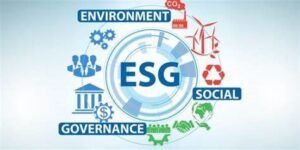On 18 October 2021, the HM Treasury published a policy paper titled “Greening Finance: A Roadmap to Sustainable Investing” (the Roadmap) that sets out the government’s long-term strategy to green the financial sector.
The Roadmap outlines a three-phase strategy to achieve this goal. The first phase is “informing” where sellers of investment products, financial services firms and corporates will be required to report information on sustainability. The second phase is “action” where this information is mainstreamed into business and financial decisions. The third is the “shift” phase; ensuring financial flows across the economy shift to align with the UK’s net zero commitment.
The Roadmap sets out the government’s strategy to achieve phase 1 through economy-wide Sustainability Disclosure Requirements (SDR), the UK Green Taxonomy and Investor Stewardship. Each of these are outlined below.
1. SDR: what will businesses have to report on?
The SDR’s aim is to combine existing and new sustainability disclosure requirements in one framework for corporates, asset managers / owners and creators of investment products. The framework will be implemented through legislation, with sector-specific requirements being determined by government departments and regulators. The Roadmap emphasises that these new requirements will go further than existing disclosure requirements (such as those required by the Task Force on Climate-Related Financial Disclosures) by requiring reporting on environmental impact. SDR will also go beyond the FCA’s existing ESG framework by requiring asset managers / owners and creators of investment products to substantiate ESG claims in a way that is both comparable and accessible. SDR will also require disclosure with reference to the UK’s Green Taxonomy. Certain firms will have to publish transition plans, detailing how they intend to align with the government’s net zero goal by 2050.
Certain UK-registered companies and listed issuers, including financial services firms, will need to disclose information about how they identify, assess and manage sustainability factors arising from their global operations in their Annual Reports. Financial services firms that manage or administer money for investors will need to disclose the sustainability-related information that clients and end-consumers need to make informed decisions about their investments. Investment product firms will need to disclose, at product level, the sustainability-related information that consumers need to make informed decisions about their investments.
2. UK Green Taxonomy
The lack of commonly accepted definitions makes it difficult for companies and investors to clearly understand the environmental impact of their decisions and can lead to issues such as greenwashing. To address this, the government is implementing the UK Green Taxonomy (the Taxonomy) that outlines criteria that specific economic activities must meet to be considered environmentally sustainable and “Taxonomy-aligned”.
Reporting against the Taxonomy will form part of SDR. Certain companies will be required to disclose the proportion of their activities that are Taxonomy-aligned. Providers of investment funds and creators of investment products will have to do the same for the assets that they invest in and products they create.
The Taxonomy has six objectives: Climate change mitigation, climate change adaptation, sustainable use and protection of water and marine resources, transition to a circular economy, pollution prevention and control and protection and restoration of biodiversity and ecosystems. Each of the environmental objectives will be underpinned by a set of standards known as Technical Screening Criteria (TSC). To be considered Taxonomy-aligned, an activity must meet three tests. It must make a substantial contribution to one of the six environmental objectives, do no significant harm to the other objectives (this aims to ensure that activities which support one objective do not have a significant adverse impact on another) and meet a set of minimum safeguards: these are minimum standards for doing business, constituting alignment with the OECD Guidelines for Multinational Enterprises and the UN Guiding Principles on Business and Human Rights.
Although Taxonomy-alignment will be determined by reported data rather than projections, the Taxonomy also recognises companies that are working to meet environmental objectives in the future. For example, due to technological constraints, some economic activities cannot currently be conducted in a way which is aligned with net zero-ambitions. For a number of these activities, the TSCs will set the threshold for Taxonomy alignment at the “best-in-sector” emissions level. These are known as “transitional activities”. Secondly, some companies will report on the proportion of their capital expenditure that is Taxonomy-aligned. This will enable these companies to demonstrate their investment in producing green activities in the future.
3. Investor Stewardship in Green Finance
The Roadmap outlines the government’s expectation that the pensions and investment sectors should seek to integrate ESG considerations into investment decision-making, monitoring and engagement strategies, escalation and collaboration (with other investors) and voting practices. For example, when exercising their shareholder rights, being ready to vote against directors, corporate actions or other resolutions.
Next Steps
The key dates and developments to look out for are:
- November 2021 – discussion papers on SDR disclosures, consumer-facing product-level SDR disclosures and the sustainable investment labelling regime
- Q1 2022 – consultation on two of the environmental objectives under the Taxonomy (climate change mitigation and climate change adaptation)
- 2022 – consultations on SDR disclosures, consumer-facing product-level SDR disclosures and the sustainable investment labelling regime
- End of 2022 – legislation on draft TSCs for climate change mitigation and climate change adaptation
- End of 2022 – government expects pensions and investment sector organisations to have published a high-quality net zero transition plan
- Q1 2023 – government to consult on expansion of TSCs and standards for remaining four environmental objectives under the Taxonomy
- End of 2023 – government to assess progress on its expectations for stewardship within the UK pensions and investment sectors
Key Considerations for Businesses
Although companies will have adequate notice before becoming subject to disclosure requirements, in order to be prepared companies are advised to review existing disclosure practices and determine the additional information required to be disclosed and the processes in place for gathering that additional information. Companies are also advised to keep up-to-date with the key consultation and implementation dates outlined above.
If you have any questions about this post, please contact Drew D. Salvest, Natalie A. Stewart, Rebecca Green any of the attorneys in our Banking and Finance Industry Group or the attorney in the firm with whom you in regular contact.
Duane Morris has an active ESG and Sustainability Team to help organizations and individuals plan, respond to, and execute on Sustainability and ESG planning and initiatives within their own space. We would be happy to discussion your proposed project with you. For more information, please contact Brad A. Molotsky, David Amerikaner, Nanette Heide, Darrick Mix, Vijay Bange, Steve Nichol, or the attorney in the firm with whom you are regularly in contact.

